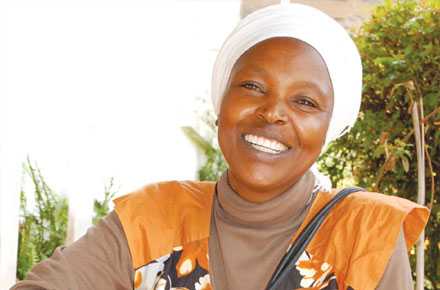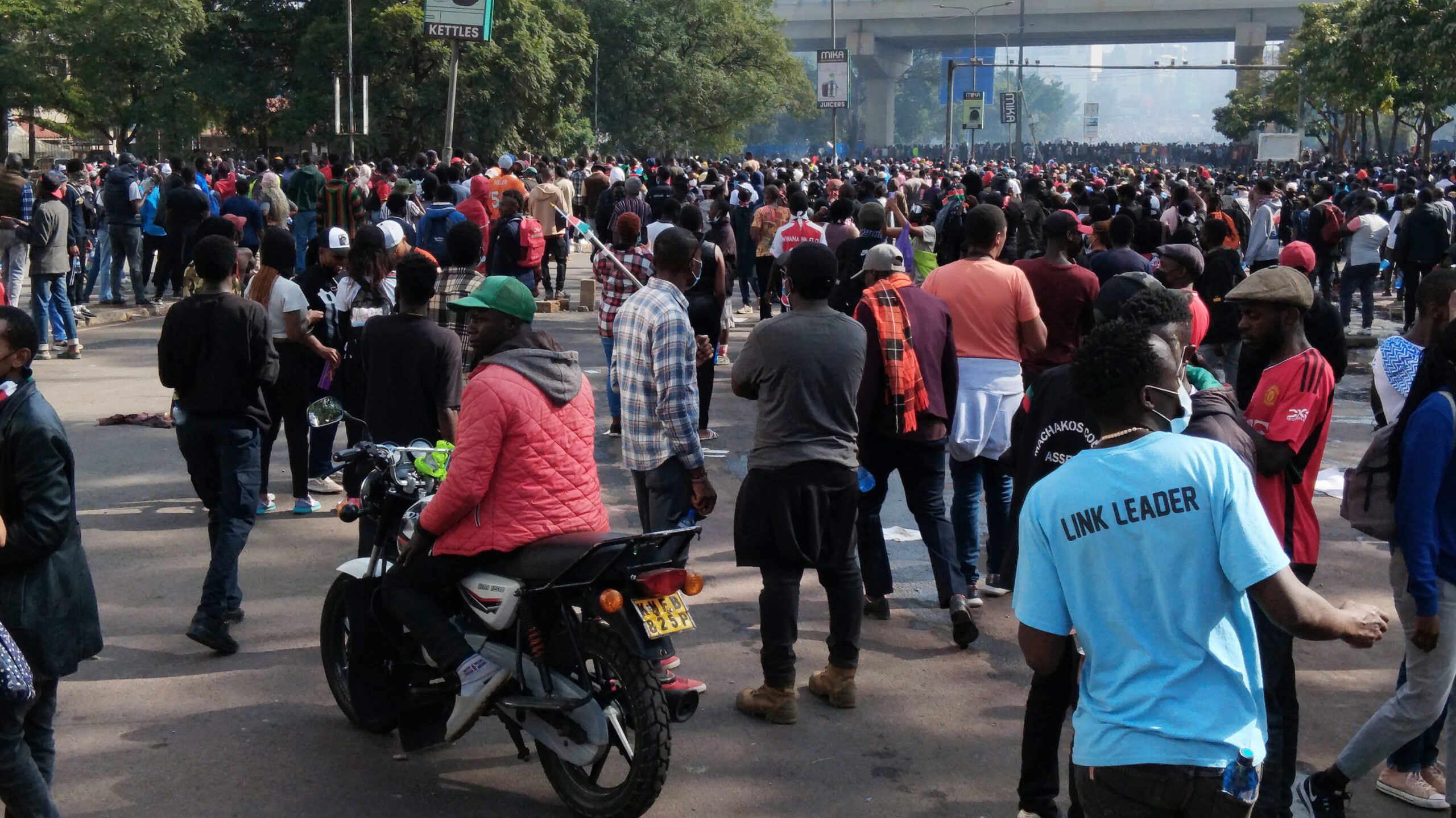I survived six miscarriages

Damaris Mwihaki, 38, is a trainer of trainers (TOT) with Kamukunji Paralegal Trust and also specialises in human rights. She is passionate about issues of reproductive health, HIV/AIDS and counseling, a passion borne out of her own experience. She shared her experience with MWAURA MUIGANA.
“My childhood dream was to become a surgeon and I was determined to pursue it after completing my secondary school education at Kirinyaga Girls in 1992. Financial difficulties, however, cut short this ambition. My grandparents, who brought me up in their Mugoiri home in Murang’a since I was one-year-old and had seen me through primary and secondary school, could not afford university education fees.
With no hope for further education and faced with the predicament most girls in such circumstances encounter, I took the easy route and moved in with a man in 1996. I was looking for material support and comfort, which my grandparents could no longer give. I became pregnant after six months of co-habitating with this man, who was now my husband. Though it was a troubled pregnancy after getting a bout of malaria, which could not be fully treated without affecting the baby, I delivered a healthy baby girl, Johaden Munjiru, at a local hospital in November 1997.
Despite still suffering from malaria, I was discharged from hospital two days after giving birth because there was an on-going nurses’ strike. The doctor had advised that I get a full treatment for malaria after giving birth but I ignored this advice and embarked on taking care of my baby. After a few days at home, I contracted cerebral malaria. I was incoherent, lacked mental coordination and was overwhelmed by nightmares. I couldn’t even take care of my baby. I was treated and fully recovered.
I conceived again in 1999 and this time round was faced with numerous health issues. I experienced persistent fevers and lower abdominal pain. I experienced pain during intercourse and when passing urine. I also started bleeding from the vagina. I was distressed and worried about my condition. When I consulted a doctor, he suspected that I had tried to procure an abortion and no amount of denial would convince him otherwise. I was scared of seeking further medical help and just let the bleeding continue until I lost the baby.
I conceived two years later and lost the baby in 2001 in a similar manner to the earlier one. I became pregnant again in 2003 and the same pattern followed. When I conceived again in 2004, I was determined to carry this pregnancy to term and sought medical advice as soon as it became clear I was pregnant.
Four months into this pregnancy, I started experiencing sharp abdominal pains. The bleeding also started. One day while I was at home alone, the bleeding became very heavy and I started experiencing labour pains. I couldn’t even get time to seek help from my neighbours before the foetus fully discharged and the pain subsided. Watching the pool of blood on the floor, I knew without a doubt I had suffered another miscarriage. As I cleaned up the blood, I saw the fully formed foetus, an image that haunts me to this day.
My husband returned home in the evening to find me downcast and numbed with pain and sadness. He was sympathetic, as he consoled me. We agreed that I should see a doctor the following day but I wasn’t bothered. I had suffered too much and my baby was already gone, anyway. And we also didn’t have money.
I became pregnant again in 2005 and the same old story was repeated. This time round, however, I had other reasons to worry. The fever persisted, I lost a lot of weight and my stomach was distended. I feared I could be suffering from tuberculosis (TB) but the doctor we consulted put me through various tests and confirmed I didn’t have the disease. Involuntary abortion was the diagnosis the doctors came up with after carrying out a pelvic scan. I was so scared of losing this baby, as well, and wanted the doctor to help me save it.
My husband, who was also now as desperate to have another child as I was, suggested that we consult doctors at the Marie Stopes Clinic in Eastleigh, Nairobi, who are reputed for specialising in women’s health. The doctor recommended another pelvic scan and carried out multiple tests before admitting me to hospital for treatment. I was still bleeding heavily and the doctor recommended evacuation of the uterus to clean it up. My mind was now focused on other serious health issues and it took the doctor to convince me that I did not have cancer.
After several days’ of stay in hospital and various tests, I was diagnosed with Pelvic Inflammatory Disease (PID). The doctor said the disease was triggered by several causes including poor sexual hygiene, engaging in sex with multiple partners, using expired condoms or wrong use of the contraceptive pill. I went through the painful evacuation procedure and was discharged from hospital after two weeks and continued with treatment for PID. I was required to be attending monthly clinics to monitor my progress.
I stopped attending the clinic after two months because of financial constraints. I was depressed and pained by the losses I had gone through. I felt alone and abandoned by everyone including friends, family and even God. It was difficult to pray as I felt God didn’t care for me any more. My only source of consolation was my daughter, the only reason I wanted to continue living.
As I did not want to experience another loss, I prayed that I would not get pregnant again. It was difficult to have sex as every time we did it, pregnancy was on top of my mind. I even contemplated having my uterus removed. I shared this with a friend who advised against taking that kind of drastic measure. This friend was extremely supportive and she encouraged me to interact with other women. I had avoided public places and functions because I was always either bleeding or mourning the loss of another pregnancy.
I started interacting with other women in 2006 and also attending various group meetings. It was in one of such meetings that I met a counselor who encouraged me to train as a trainer of trainers (TOT). She organised for me to be trained on reproductive health and HIV/AIDS with African Evangelist Enterprise, an NGO dealing with reproductive health. I graduated as a TOT with a lot of confidence and zeal to help other women.
When I confided with one of my tutors, a nurse, about the miscarriages I had gone through, she explained the cause could have been untreated PID. She told me PID was a serious condition and that I needed to consult a specialist. She recommended a gynaecologist who put me on treatment for the next two years. While still on treatment, I became pregnant in 2007 but this, too, ended in a miscarriage.
To eliminate chances of another pregnancy, the gynaecologist put on an emergency pill (e-pill). Then in November 2010, I noticed some bleeding and consulted the doctor who ordered a urine test that confirmed I was pregnant. Yes, pregnant while still on the contraceptive pill!
This brought great fear to me. I could not stand another miscarriage and also the fact that I was on the pill gave me doubts about the pregnancy diagnosis. I attended a free medical camp at SOS Buru Buru organised by a German-based NGO where I hoped to get a second opinion. A trans-vaginal scan (TBS), which examines a woman’s reproductive organs, was carried out together with another urine test and pregnancy was confirmed.
Although it was a difficult pregnancy as I suffered from gestational blood pressure, I delivered a healthy baby boy, Jesse, on July 24, 2011. Jesse was born through a caesarean section. While I thank God for my two children, I wish I had known about PID much earlier as it could have helped save the six babies I lost. Reproductive health education should be availed to both women and men to avoid the kind of suffering I went through. I now use my experience to empower people with reproductive health education.”
More about pelvic inflammatory disease…
Pelvic inflammatory disease (PID) is an infection of the female reproductive organs mainly the uterus, fallopian tubes and ovaries. It usually occurs when sexually transmitted bacteria spread from the vagina to the uterus and upper genital tract. PID is caused by unsafe sexual practices such as unprotected sex with one or more partners, which increases chances of acquiring a sexually transmitted infection (STI).
Some forms of contraception such as intrauterine device (IUD) may increase the risk of developing PID, but a barrier method, such as a condom, reduces the risk. Use of the birth control pill alone offers no protection against acquiring STIs, but the pill may offer some protection against the development of PID by causing the body to create thicker cervical mucus, making it more difficult for bacteria to reach the upper genital tract.
Bacteria may also get into a woman’s reproductive tract as a result of an IUD insertion, childbirth, miscarriage, abortion or endometrial biopsy — a procedure to remove a small piece of tissue from the uterine lining for laboratory analysis.
Many women who develop PID either experience no signs or symptoms or don’t seek treatment. Symptoms include pain in the lower abdomen and pelvis, heavy vaginal discharge with an unpleasant odour, irregular menstrual bleeding, pain during intercourse, lower back pain, fever, fatigue, diarrhoea or vomiting and painful or difficult urination. If untreated the disease can cause scar tissue and collections of infected fluid (abscesses) to develop in the fallopian tubes and damage reproductive organs resulting to an ectopic pregnancy.
Ectopic pregnancies can cause massive, life-threatening bleeding and require emergency surgery. PID may also damage reproductive organs and cause infertility. The more times a woman has PID, the greater her risk of infertility. Delaying treatment for PID also dramatically increases the risk of infertility.
Published in May 2013




